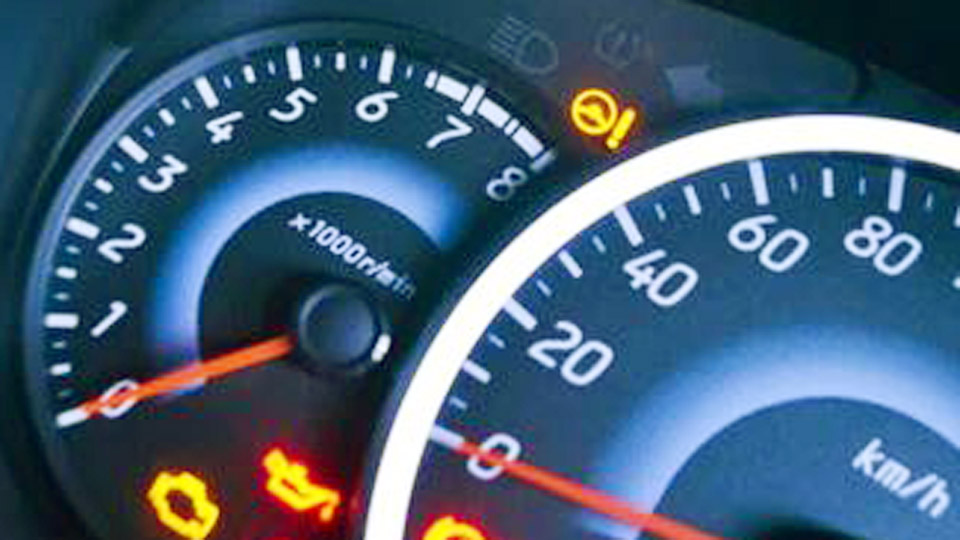What Is the Steering Wheel Sign on Dashboard?
I’ve been driving for over 20 years, and nothing grabs your attention quite like a warning light popping up on your dashboard. One light that’s puzzled me in the past is the steering wheel sign. I first saw it on my old sedan during a rainy drive, and it sent me into a mild panic.
After digging into it—through mechanics, manuals, and my own trial and error—I learned that the steering wheel sign on the dashboard typically indicates a problem with the power steering system or, in newer cars, the electronic steering assist.
It’s a warning you can’t ignore, and I’m here to share everything I’ve discovered about what it means, why it lights up, and what to do next. Let’s break it down so you can handle this warning with confidence and keep your car safe on the road.

Photo by ml-vehicle
Steering Wheel Sign
The steering wheel sign is a warning light shaped like a steering wheel, sometimes with an exclamation point next to it. I’ve seen it in different cars—my sedan had a simple steering wheel icon, while my friend’s SUV showed it with a red exclamation mark. It’s your car’s way of saying something’s wrong with the steering system.
In older cars, it usually points to power steering issues, like low fluid. In modern vehicles, it often signals a fault in the electronic power steering (EPS) system. I learned this when my mechanic explained that my car’s EPS sensor was acting up. This light means you need to act fast—steering problems can make driving dangerous.
Why the Steering Wheel Sign Matters
Steering is how you control your car. When that warning light comes on, it’s like your car whispering, “I might not turn as smoothly as you expect.” I ignored it once, thinking it was a glitch, and my steering got heavy, making a tight turn scary. This light can warn you of issues that affect safety, like loss of power steering or unresponsive handling.
It also protects your car from further damage—fixing a small problem now is cheaper than replacing a whole steering system later. I’ve learned to treat this light as a priority, and it’s saved me from bigger headaches.
Common Causes of the Steering Wheel Warning Light
I’ve dealt with this light on a few cars, and the causes vary. Here’s what I’ve found triggers it, based on my experience and talks with mechanics:
Low Power Steering Fluid
In older cars with hydraulic power steering, low fluid is a common culprit. I had this issue in my 2005 sedan. The fluid lubricates and powers the steering system, and a leak or evaporation can drop levels. When the fluid got low, my steering felt stiff, and the light came on. Checking the reservoir under the hood fixed it—I topped it off with the right fluid, and the light went away.
Power Steering Pump Failure
The pump circulates fluid in hydraulic systems. If it fails, steering gets hard, and the light pops on. I helped a friend with this on his truck. His pump was making a whining noise before the light appeared. Replacing it was pricey—about $400—but ignoring it could’ve damaged the steering rack. I learned to listen for odd noises as an early warning.
Electronic Power Steering (EPS) Fault
Newer cars use electric motors instead of fluid. I drive a 2018 SUV with EPS, and a sensor glitch triggered the light once. EPS issues can come from faulty sensors, wiring, or the motor itself. My mechanic reset the system, and it was fine, but sometimes repairs are needed. EPS problems are tricky because they often need a diagnostic scan to pinpoint.
Battery or Electrical Issues
Your car’s steering system relies on electricity, especially in EPS models. A weak battery or bad alternator can cause the light to flicker. I had this happen in my wife’s car—a loose battery cable was the issue. Tightening it solved the problem. I now check battery connections if the light comes on unexpectedly.
Steering Angle Sensor Malfunction
This sensor tracks the steering wheel’s position, helping with stability control. I read about this when diagnosing my SUV’s light. If it fails, the light may appear, and steering might feel off. Recalibrating or replacing the sensor fixed it for me, but it needed a mechanic’s tools. This is common in cars with advanced safety features.
Belt or Pulley Problems
In hydraulic systems, a loose or broken serpentine belt can stop the power steering pump. I saw this on a friend’s van—the belt was frayed, and the light came on. Replacing the belt was a quick fix, but I learned to inspect belts during oil changes to catch wear early.
How to Identify the Steering Wheel Sign
The steering wheel sign varies by car make and model. In my sedan, it was a yellow steering wheel with an exclamation point. My SUV showed a red steering wheel icon. Some cars, like Fords, pair it with a message like “Power Steering Assist Fault.”
I check my owner’s manual to confirm what the light means—every car is a bit different. If it’s steady, it’s urgent but not immediate. If it flashes, I pull over safely—it could mean total steering failure. I’ve learned to note the light’s color and behavior to judge how serious it is.
What to Do When the Steering Wheel Sign Comes On
Seeing that light can be stressful, but I’ve been through it enough to know the steps. Here’s what I do:
Step 1: Assess Steering Feel
Notice how the steering feels. If it’s heavy or unresponsive, I drive cautiously to a safe spot. My sedan’s steering got stiff when the light came on, so I pulled into a parking lot. If it feels normal, I head to a mechanic but avoid long trips. Don’t ignore changes—hard steering is a red flag.
Step 2: Check Power Steering Fluid (If Applicable)
For cars with hydraulic steering, I pop the hood and check the fluid reservoir. It’s usually near the engine, marked with a steering wheel icon. I look for low levels or leaks. If it’s low, I add the right fluid—check your manual for the type. I topped off my sedan’s fluid, and the light went out after restarting the car.
Step 3: Inspect Battery Connections
A weak battery can trigger the light. I check for loose or corroded terminals. In my wife’s car, tightening a loose cable fixed it. If the battery’s old, I test it at an auto shop—most do it free. I replace batteries every 4-5 years to avoid issues.
Step 4: Restart the Car
Sometimes, a glitch causes the light. I turn off the engine, wait a minute, and restart. This worked once in my SUV—the light was gone after a reset. If it stays on, I don’t keep driving without checking further—it’s not worth the risk.
Step 5: Get a Diagnostic Scan
Modern cars need a scan to find EPS faults. I take my car to a trusted mechanic or auto parts store—many offer free scans. My SUV’s light was a sensor issue, caught by a $50 scan. The code tells you what’s wrong, saving guesswork. I keep a cheap OBD2 scanner at home now for quick checks.
Step 6: Visit a Mechanic
If the light persists, I book a mechanic. Steering issues can be complex, like pump or sensor failures. I fixed my friend’s truck pump through a shop—it was safer than DIY. Expect costs from $100 for fluid leaks to $1000 for EPS repairs. I shop around for quotes to save money.
Common Causes and Fixes
Here’s a table I put together to summarize what triggers the steering wheel light and how to fix it:
| Cause | Symptoms | Fix |
|---|---|---|
| Low Power Steering Fluid | Heavy steering, light on | Top off fluid, check for leaks |
| Power Steering Pump Failure | Whining noise, hard steering | Replace pump ($300-$500) |
| EPS Fault | Light on, steering feels off | Diagnostic scan, repair sensor/motor ($100-$1000) |
| Battery/Electrical Issues | Flickering light, other warning lights | Check battery connections, replace battery ($100-$200) |
| Steering Angle Sensor | Light on, stability control issues | Recalibrate or replace sensor ($200-$400) |
| Belt/Pulley Problems | Squealing, loss of steering assist | Replace belt ($50-$150) |
This table helps me explain the light to friends—it’s clear and practical.
How Serious Is the Steering Wheel Sign?
The light’s severity depends on the issue. Low fluid might be a quick fix, but I’ve driven with it briefly to reach a shop. EPS failures or pump issues are serious—steering can fail completely. I had a friend lose steering on a highway due to a bad pump, and it was terrifying.
If steering feels heavy or erratic, I pull over and call for a tow. Safety comes first—don’t push your luck. I learned this after limping my sedan home with stiff steering, and I won’t do it again.
Preventing Steering Wheel Warning Issues
I’ve found ways to keep this light from coming on. Here’s what I do:
- Check Fluid Regularly: For hydraulic systems, I check fluid every oil change. Topping it off prevents low levels.
- Listen for Noises: Whining or squealing can signal pump or belt issues. I caught a belt problem early this way.
- Maintain the Battery: I test my battery yearly and clean terminals to avoid electrical glitches.
- Drive Smoothly: Avoid sharp turns or hitting curbs—it stresses the steering system. I learned this after a pothole triggered my SUV’s light.
- Service Regularly: I follow my car’s maintenance schedule to catch issues early. A $100 service saved me from a $500 repair once.
These habits have kept my newer cars’ steering systems trouble-free.
Special Considerations for Different Cars
Not all cars use the same steering system. My old sedan had hydraulic steering, so fluid checks were key. My SUV has EPS, which needs scans for diagnosis. Luxury cars, like BMWs, often have complex EPS with more sensors—I helped a friend with his 3 Series, and it needed a dealer visit.
Older cars without power steering won’t show this light but are harder to turn. I drove my dad’s vintage truck once, and it was a workout! Check your manual to know your car’s system—my SUV’s EPS was easier to maintain once I understood it.
DIY vs. Professional Repairs
I’m handy, but steering repairs can be tricky. DIY works for simple fixes like topping off fluid or tightening battery cables—I’ve done both for under $20. For pump, sensor, or EPS issues, I go to a mechanic. Replacing a pump on my friend’s truck needed special tools, and it cost $400 at a shop.
EPS repairs often require reprogramming, which I leave to pros. I save money by scanning codes myself and bringing the info to the mechanic—it cuts diagnostic time. Expect $100-$1000 for repairs, depending on the issue.
Eco-Friendly Maintenance Tips
I care about the environment, so I maintain my steering system responsibly. I use eco-friendly power steering fluid when possible—check your manual for compatibility. I recycle old fluid at auto shops—most take it free.
Keeping tires properly inflated reduces steering strain, saving fuel. I also wash my car on grass to let runoff absorb naturally. These small steps keep my car and the planet in good shape.
When to Seek Immediate Help
Some situations need urgent attention. If the steering wheel light comes on and steering is very hard, jerky, or unresponsive, I pull over safely and call a tow. This happened to a friend with an EPS failure, and driving further could’ve been dangerous. Red flashing lights or multiple warning lights mean stop driving. I carry roadside assistance for peace of mind—it’s saved me twice. Don’t risk it—steering failure is no joke.
Maintaining Your Car After Fixing the Light
Once the light’s fixed, keep the system healthy. I check fluid monthly and listen for odd noises. Regular oil changes and tire alignments reduce steering stress—I do alignments yearly. If you fixed an EPS issue, drive gently for a few days to ensure it’s stable. I reset my SUV’s system after a sensor fix, and it’s been fine since. Staying proactive keeps the light off and your car safe.
Conclusion
The steering wheel sign on your dashboard is a warning you can’t brush off—it’s your car telling you the steering system needs help. I’ve faced this light on my own cars, from low fluid in my sedan to a sensor glitch in my SUV, and each time taught me how to respond. Whether it’s checking fluid, scanning codes, or calling a mechanic, acting fast keeps you safe and saves money.
With the right knowledge, you can handle this warning with confidence, whether you’re a new driver or a seasoned one like me. So, next time that light pops on, stay calm, follow these steps, and get back on the road safely. Your car—and your peace of mind—will thank you!
FAQs
What does the steering wheel sign on the dashboard mean?
It signals a problem with your steering system, like low fluid or an electronic fault. I saw it on my sedan when the fluid was low.
Can I drive with the steering wheel light on?
Maybe briefly, if steering feels normal. I drove my SUV to a shop, but if steering’s heavy, pull over—it’s not safe.
How do I check power steering fluid?
Pop the hood, find the reservoir, and check the level. I topped off my sedan’s fluid, and the light went away.
Why does the light come on in newer cars?
Newer cars have electronic steering, and sensor or motor issues trigger it. My SUV’s light was a sensor glitch.
How much does it cost to fix steering issues?
It varies—$20 for fluid, up to $1000 for EPS repairs. I paid $400 for a friend’s pump replacement.
Can a bad battery cause the steering wheel light?
Yes, low voltage can trigger it. I fixed my wife’s car by tightening a loose battery cable.

David Peterson, the chief editor of sparepartscare. I am an automobile engineer and assign to an local firm with much experience in automobile equipment. During the time, most of my experience is related to the Industry of cars parts. I learned about the thing, when working with experienced inspectors, one must be as good as the inspector, or better, with knowledge of the project as well as the practical aspects of automobile industry.











